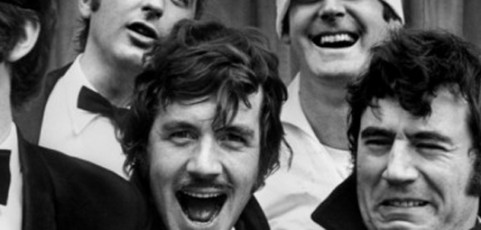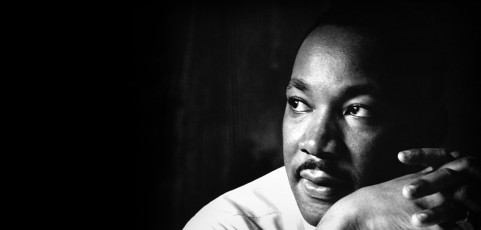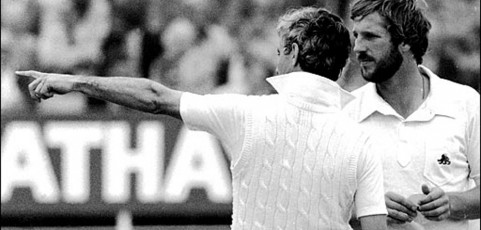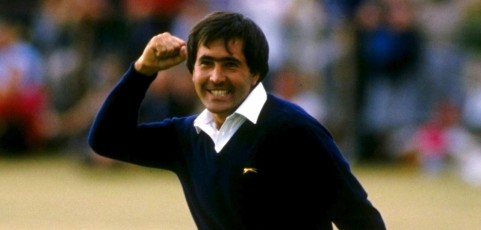It’s back to school time. It’s the end of holidays. The nights are closing in. To combat Autumnal blues, and following on from our Influence at the Movies post, the Positive Power & Influence team has chosen five favourite sketches that demonstrate influence behaviours and styles in action, with mixed results. MONTY PYTHON: Argument Clinic Style: Persuading Behaviour: Reasoning Notes: Michael Palin reasons for all he’s worth. John Cleese proves to be an immovable object. Excerpt: “An argument is a collective series of statements to establish a definite proposition.” PETE & DUD: One Leg Too Few Style: Bridging Behaviour: Involving/Listening Notes: Peter Cook involves, discloses; Dudley Moore listens. Excerpt: “Need I say, with over much emphasis, that it is in the leg division that you are deficient.” BIG TRAIN: Zurich Sketch Style: Persuading/Attracting Behaviour: Proposing/Sharing Visions Notes: Simon Pegg takes a bold step to roadblock impending disaster. Excerpt: “Alexander’s going to be hugely distracted and confused and he’s maybe not going to even talk about Zurich at all.” MONTY PYTHON: Holy Grail Style: Asserting Behaviour: Stating Expectations Notes: Graham Chapmen attempts to assert his Kingly position . . . but to no avail. Excerpt: “Are you suggesting coconuts migrate?” MITCHELL & WEBB: 3rd Person Caesar Style: Asserting/Attracting Behaviour: Positive Evaluation/Sharing Visions Notes: David Mitchell tries a range of styles to coax his boss through the new protocol. Excerpt: “So instead of saying ‘I am listening’ you say ‘Caesar is listening’ or ‘Caesar listens’. Makes you seem more . ....
I have a dream . . . The Influence Style of Attracting
When Martin Luther King stood at the podium on the steps of the Lincoln Memorial in Washington DC half a century ago, he did not inspire a generation by declaring ‘I have a great strategic plan.’ He said, quite simply, ‘I have a dream.’ And like many of the great speeches, he was sharing a vision. He was seeking to attract his listeners to a dream of a united America, where all men and women were regarded equal, regardless of colour. Great orators seek to draw the listener towards their way of thinking. They emphasise common ground by constant use of the words ‘us’ and ‘we’ – ‘we all believe’, ‘together we can’. But it’s not all sharing visions. Our selection of speeches show a complex weave of human behaviours and qualities. Leaders and speakers attract, propose, reason and persuade, offer incentives and pressures, disclose and assert. John F. Kennedy’s Inaugural Address from January 1961, for example, climaxes with the direct request that Americans . . . ‘Ask not what your country can do for you – ask what you can do for your country.’ It includes a call for enemy powers to find common ground . . . ‘Let both sides explore what problems unite us instead of belabouring those problems which divide us.’ There are admissions and disclosures . . . ‘All this will not be finished in the first 100 days . . . I cannot see how the future will pan out . . .’ But the overriding purpose is to attract, through words, rhetorical devices such as three-part lists and contrasting pairs, through tone of voice and through body language. And to celebrate the 50th anniversary of Martin Luther King’s dream, the Positive Power & Influence team has picked ten examples that illustrate the power and influence of attraction. Winston Churchill, ‘This was their finest hour’, 1940 Notes: The ‘finest hour’ speech, of which this is a later recording, was delivered by Winston Churchill to the House of Commons in June 1940. In May he had delivered the ‘Blood, toil, tears and sweat’ speech, his first to Parliament as Prime Minister. In early June he made the ‘We shall fight on the beaches’ speech, after reporting the evacuation from Dunkirk. Now he spoke to Parliament as France sought an armistice with Germany, and Britain faced the prospect of continuing alone. Excerpt: “The whole fury and might of the enemy must very soon be turned on us. Hitler knows that he will have to break us in this island or lose the war. If we can stand up to him, all Europe may be freed and the life of the world may move forward into...
Like a Phoenix from the Ashes
‘I gave him his head . . .’ A tale of strong but sympathetic leadership in a crisis You have a star performer. He has a wide skillset, shows dogged perseverance, great accuracy and determination. Not only that, he’s a galvanising member of the team – he’s relaxed, charming, with a boyish sense of humour, and yet has the steely resolve of a born competitor, inspiring – and drawing inspiration from – those around him. His performances attract more and more attention. This leads to a rapid promotion – too rapid. As team leader, his performances dip, his goals are no longer achieved, his confidence nosedives, and he’s suddenly, seemingly, yesterday’s man. He steps down. He finds himself back in the same old surroundings – just another member of a team. Not only that, but a team in crisis. Luckily, his nickname is Beefy and his new team leader is Mike Brearley. It’s tea on the fourth day of the third test. England’s cricketers are already one-nil down in the 1981 Ashes Test series against Australia. The scoreboard at Headingley displays the latest odds from Ladbrokes. 1-4 – Australian win 5-2 – Draw 500-1 – England win Australia made 401 runs in the first innings. Having dismissed England for 174, they enforced the follow-on, making England bat again. Writing in The Cricketer, Christopher Martin-Jenkins said: “Ian Botham, magically transformed in his first match away from a captaincy which had weighed more heavily than Frodo’s ring, stole the Third Test from Australia in two hours of thunderous driving. Coming in at 105 for 5, with England still 122 behind, his brilliance, bravado and, in [Australian captain] Kim Hughes’s words, his ‘brute strength’, gave England’s bowlers 129 runs to play with. At 56 for one their cause seemed hopeless but Bob Willis took eight of the last nine wickets, Mike Gatting and Graham Dilley held crucial catches and the daylight robbery was completed amidst national rejoicing. “Only once before had a Test been won by a side following on [in 1894] . . . But the speed with which the match at Headingley was turned upside down made it unique; something one expects to witness only once in a lifetime.” How was it done? A huge number of factors, including blind luck, played into that most decisive rediscovery of form. What would become England’s most famous cricketing victory, wasn’t just down to Botham. His astounding innings opened the door, but it was Bob Willis’ decisive bowling spell that snuffed out the Australian run chase. Part of the credit for Botham’s turnaround must go to the influence of his Captain Mike Brearley. Brearley’s leadership loosened the shackles. So what was his leadership...
Virtual Influence
Virtual or remote communication can impair your ability to influence others. But planning and preparation can help maximise your long-distance impact. All the behaviours and styles that form the core of the Positive Power & Influence Programme – asserting, persuading, bridging, attracting and disengaging – are as relevant in remote communication as face to face. At the same time the potential for misunderstanding and misinterpretation is magnified. Face to face, we communicate using body language and gestures, by regulating the volume and tone of speech – the ‘music and dance’. Subtleties that might be lost during a phone call or email, can be sensed and reacted to instantly. Therefore, any kind of long-distance influence requires planning. So whether you’re preparing for a vital video-conference, an important phone call, or a key email, here are some of our top tips. Before you start Consider which mode of communication you should choose. An informal instant message would be perceived very differently to a phone call or an email. You might be tempted to choose the easiest option, but the art of influencing in the virtual realm requires you to consider how the recipients of your message will see it. Ask yourself how the target would like to be contacted – based on their personality, your message or the circumstances. E-influence Research shows the best times of day for emails being opened are 8am, 9am, 3pm, 8pm Make the subject line informative, brief and make it stand out. End by making it clear what action (if any) you’re requesting, how and by when. Pay attention to the ‘verbal’ components of your email message. It’s critical in an influencing situation that you choose words carefully to convey your message without ambiguity. Conciseness is essential – you can avoid the trap of appearing abrupt by making it more personal or varying your style. Be creative when putting an email together – as well as Push Styles where you outline your views, consider using Pull Styles: disclosing that ‘I am uncertain about how we should proceed . . .’; emphasising common ground by saying ‘in the past we agreed on . . .’; or demonstrating that you have listened to what has been previously agreed . . . ‘from your last email I see that x, y, and z are important to you.’ Without the ability to interpret signals, a turn of phrase, a misplaced comma, can quickly lead to ruffled feathers. Occasional use of exclamation marks can indicate a lightness of tone, although they are obviously not appropriate for all communications. On the phone Listen carefully for pauses or changes in intonation. You’ll also be picking up clues about what they’re really saying by...
The Power of Sharing Visions: The Spirit of Seve
Golf is a very individual, self-orientated sport, writes Jonathan Scott. A round of golf involves a player doing battle with his or her own game, as much as competing with the leader board. But every couple of years a group of individual professional players come together to face off against another team. The event is the Ryder Cup, and the last two in particular, both won by the European team, have been close. In 2010 at Celtic Manor in Wales, the American team mounted a late charge and came very close to stealing an unlikely victory, only to be pipped by Graeme McDowell’s win over Hunter Mahan in the last of the 12 singles matches. It was one of the classics and it seemed unlikely such drama could be repeated. Then in 2012, this time on American soil at Medinah, the European team were 10-4 down at the end of the penultimate day, with the Americans only needing four-and-a-half points from the 12 on offer to secure victory. Nevertheless, the Europeans emerged triumphant, matching the previous record comeback, set by the US team at Brookline, Massachusetts in 1999, but this time they did it without home advantage. In short, the European players won eight of the 12 singles matches on that final day, beating the USA 14½-13½. Afterwards all the European players quoted the belief they had in the team, and in their captain José María Olazábal. So how was it achieved? How were these self-orientated, individual sportsmen brought together? Ian Poulter, who on the penultimate day birdied the last five holes of his four-ball match to earn a vital point and keep Europe in the hunt, explains: Seve Ballesteros, who won 20 of his 37 Ryder Cup matches between 1979 and 1995, died in May 2011 following a brain tumour. Team captain and close friend of Seve, Olazábal, told reporters beforehand that the spirit of Seve would be with his European team “every step of the way”. “Seve was an important part of the Ryder Cup because of the way he played and conducted himself from his opening match in 1979,” Olazábal told the Daily Telegraph. “He set a wonderful example to generations of golfers and for me there are many, many memories . . .” The players’ bags and final day sweaters were embellished with an image of the Spaniard – a clenched-fist salute to the St Andrews crowd after sinking the putt to win the 1984 Open Championship. Olazábal: “He has meant a lot to me and the team, and I wanted to have something that was present to each and every player.” And so Olazábal led Europe to a remarkable comeback, and afterwards his team...







